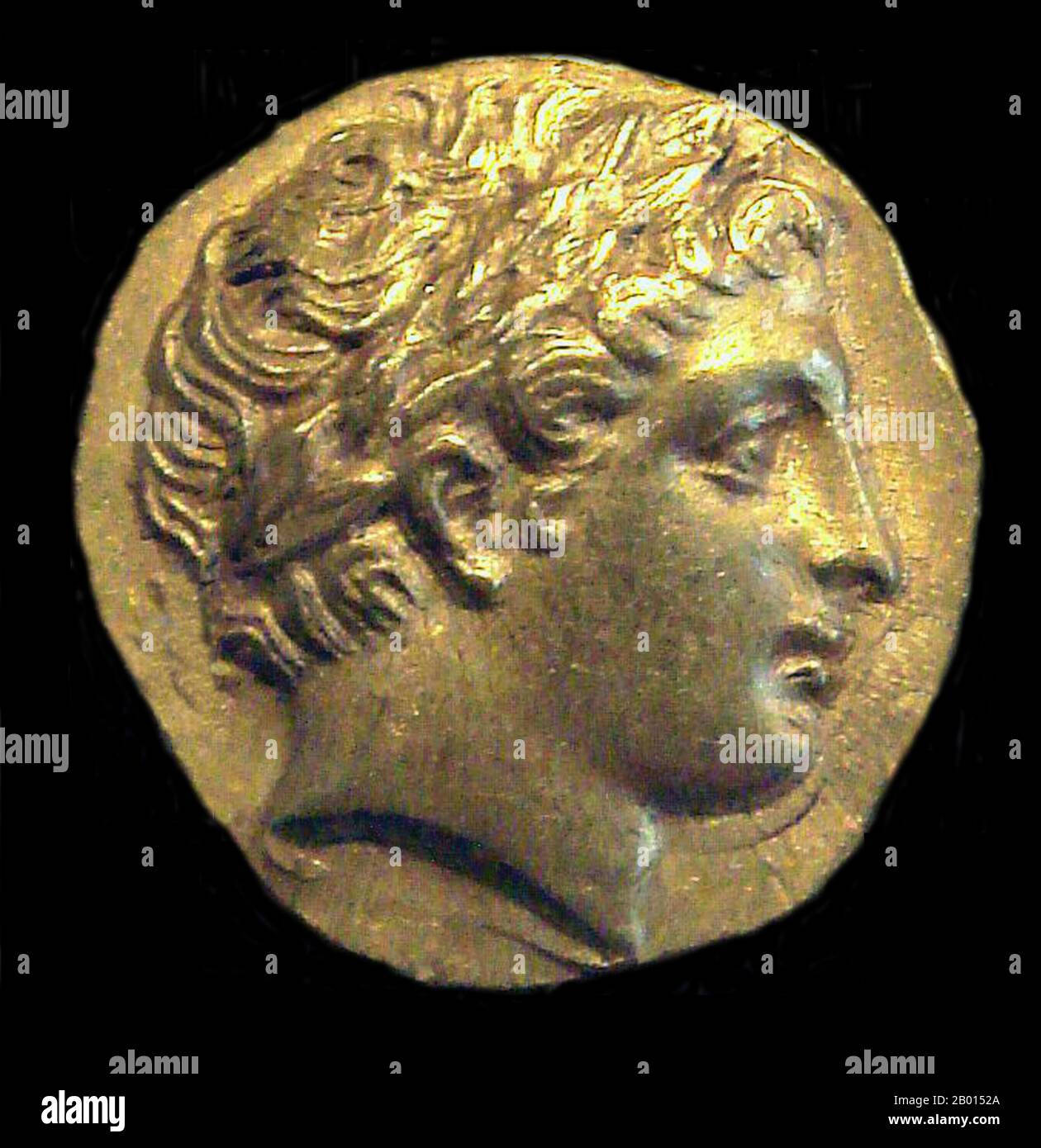Greece: Head of Apollo on a gold stater coin struck by Philip II of Macedon (r.359-336 BCE). Photo by PHGCOM (CC BY-SA 4.0 License). Apollo is one of the most important and diverse of the Olympian deities in Greek and Roman mythology. The ideal of the kouros (a beardless, athletic youth), Apollo has been variously recognized as a god of light and the sun; truth and prophecy; medicine, healing, and plague; music, poetry, and the arts; and more. Apollo is the son of Zeus and Leto, and has a twin sister, the chaste huntress Artemis.

Image details
Contributor:
CPA Media Pte Ltd / Alamy Stock PhotoImage ID:
2B0152AFile size:
52 MB (1 MB Compressed download)Releases:
Model - no | Property - noDo I need a release?Dimensions:
4200 x 4330 px | 35.6 x 36.7 cm | 14 x 14.4 inches | 300dpiDate taken:
5 June 2006Photographer:
Pictures From HistoryMore information:
This image could have imperfections as it’s either historical or reportage.
Head of Apollo on a gold stater coin struck by Philip II of Macedon (r.359-336 BCE). Apollo is one of the most important and diverse of the Olympian deities in Greek and Roman mythology. The ideal of the kouros (a beardless, athletic youth), Apollo has been variously recognized as a god of light and the sun; truth and prophecy; medicine, healing, and plague; music, poetry, and the arts; and more. Apollo is the son of Zeus and Leto, and has a twin sister, the chaste huntress Artemis. Apollo is known in Greek-influenced Etruscan mythology as Apulu. Apollo was worshiped in both ancient Greek and Roman religion, as well as in the modern Greco–Roman Neopaganism.